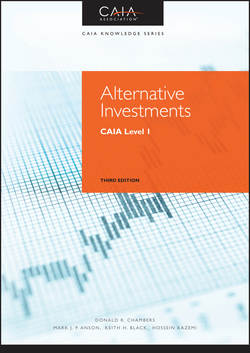Читать книгу Alternative Investments - Hossein Kazemi - Страница 47
На сайте Литреса книга снята с продажи.
PART One
Introduction to Alternative Investments
CHAPTER 3
Quantitative Foundations
3.4 Problems with Internal Rate of Return
3.4.4 IRR and the Reinvestment Rate Assumption
ОглавлениеEven if all the investments have simplified cash flow patterns without borrowing or multiple sign change problems, the IRR does not necessarily rank investments accurately. The use of the IRR to rank investment alternatives is often said to rely on the reinvestment rate assumption. The reinvestment rate assumption refers to the assumption of the rate at which any cash flows not invested in a particular investment or received during the investment's life can be reinvested during the investment's lifetime. If the assumed reinvestment rate is the same rate of return as the investment's IRR, then no ranking problem exists.
Suppose that Investment A offers an attractive IRR of 25 % compared with the 20 % IRR of Investment B. As previously discussed, it is possible that an investor would select Investment B over Investment A if investment B offers larger scale, meaning more money invested for longer periods of time. But if an investor who selects Investment A is able to invest additional funds at a 25 % rate of return and is able to reinvest any cash flows from Investment A at the 25 % rate, then the scale problem vanishes, and IRRs can be used to rank investments effectively. In practice, there would typically be no reason to assume that cash inflows could be reinvested at the same rate throughout the project's life, so ranking remains a problem. The reinvestment rate assumption is addressed by the modified IRR. The modified IRR approach discounts all cash outflows into a present value using a financing rate, compounds all cash inflows into a future value using an assumed reinvestment rate, and calculates the modified IRR as the discount rate that sets the absolute values of the future value and the present value equal to each other.
Extensions of the modified IRR methodology can be adapted to develop realized rates of returns on completed projects or for projects in progress. In the case of a private equity or private real estate investment with known cash flows since inception and with a current estimate of value, a realized or interim IRR can be calculated using the assumption that intervening cash inflows are reinvested at the benchmark rate.
